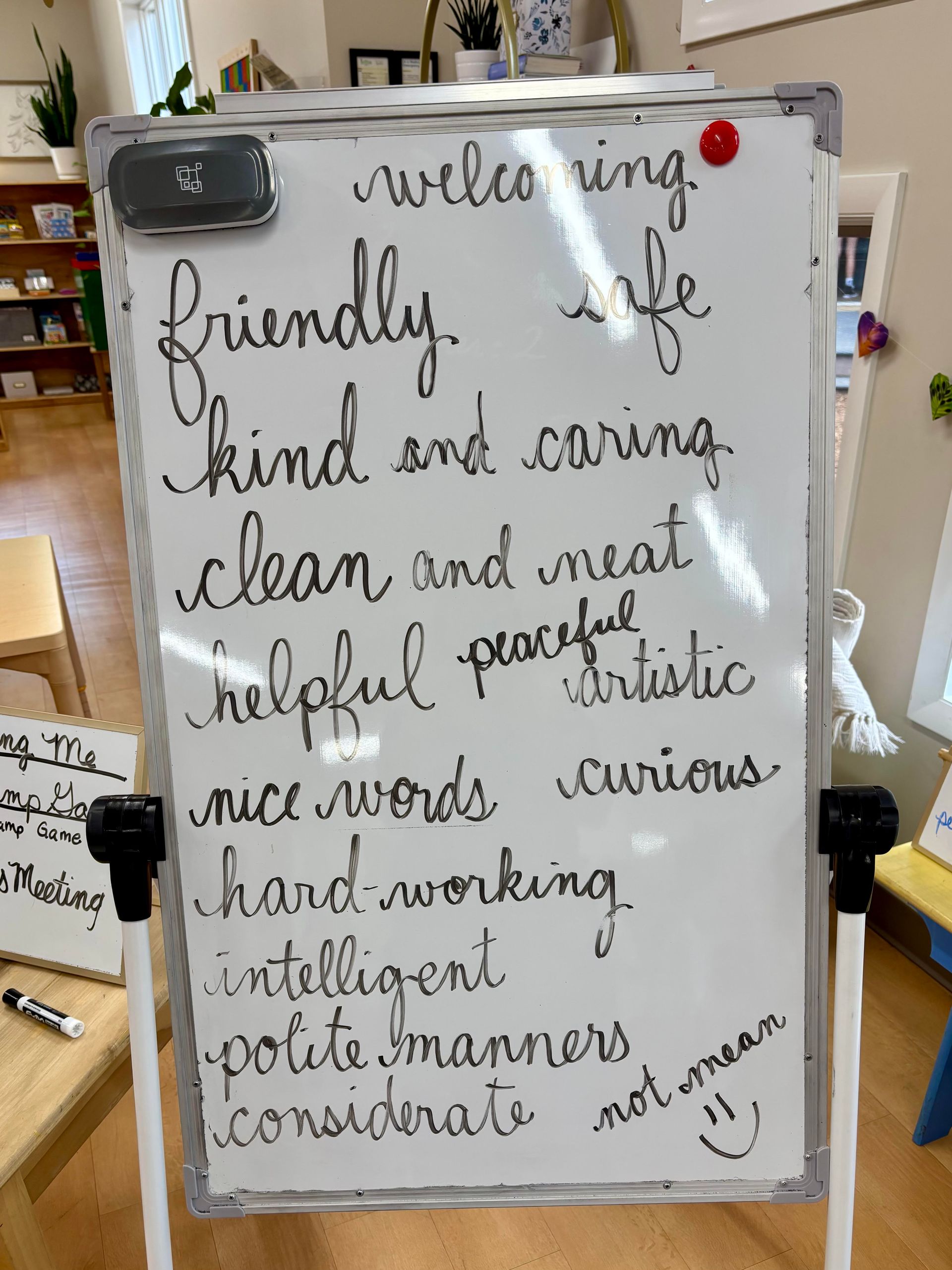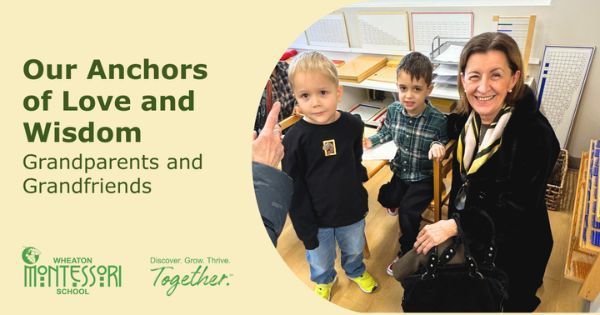
In all thriving Montessori classrooms, students and guides are constantly balancing freedom and responsibility. Students enjoy several freedoms that might be inhibited elsewhere: freedom to move around the classroom, freedom to choose their own work, freedom to socialize, freedom to question, and freedom to learn according to their interests. These freedoms are always balanced against a high level of responsibility: to themselves, to their peers, and to their classroom.
Read on to understand how the freedoms and responsibilities are balanced in the Elementary program at Wheaton Montessori School.
What Kind of Classroom Do You Want to Have?
One of the ways that teachers guide students towards being accountable for their actions and within the classroom is a classroom meeting early in the year, during which the students discuss what "kind of classroom" they want to be a part of - and what rules or expectations will help them achieve their goals. This photograph shows what students in one of our Lower Elementary classrooms (grades 1st-3rd) shared when asked, "What kind of classroom do you want to have?"

Otherwise, unprompted by the teacher, these young children offered hopes for "an artistic," "peaceful," "hard-working, "considerate," and "friendly" classroom, Others shared that having friends use polite language and table manners was important to them. Many shared that they wanted to be a part of a "helpful" classroom, where everyone could be encouraged to be "curious." Another shared that they wanted to feel safe at school. "Clean," "neat," and "tidy" were shared by many (maybe to the surprise of parents who would love a tidier playroom!).
After the students share what kind of classroom they want to have, the teacher will ask, "So, how do we get there? What do we need to do every day to be sure that we have this kind of classroom?
Students Explore Rules and Expectations
If you want your classroom to be clean and tidy, what will you need to do when you're done with your work? If you've made a mess? If you see a spill?
If you want your classroom to be a place where it feels safe, how will you move your body within it? How should you walk with scissors, supplies, or large items? How should you hold your body if you're standing in line next to a friend?
If you want your classroom to be hard-working and a place where curiosity is welcomed, what kind of work should you be selecting from the shelves? Should it be work you've perfected long ago? Or something that stretches your brain? Should you join a research project? Should you welcome questions or scoff when a peer raises their hand?
As students think through these questions, rules begin to develop from the children's discussion, guided by the adult. They discuss what they think appropriate consequences should be to work refusal, unkindness, not being responsible for messes, or not working at a level that each child knows they can.
Embracing Responsibility, Enjoying Freedom
When classroom rules are tied to the goal of manifesting the classroom you'd want, thought through and agreed upon by all of your peers, children take on the responsibility of caring for themselves, their peers, and their classrooms. This responsibility allows them the freedom that they love so much - and with which they flourish, thrive, and grow.


